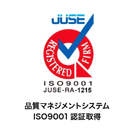All you need is a crash course in bookkeeping 101 and the right software on your side. An Italian mathematician and Francisan monk, Pacioli wrote the first popular description of the double-entry system and the use of various bookkeeping tools such as journals and ledgers. His book became the teaching tool for bookkeeping and accounting for the next several hundred years. Bookkeeping became a recognized profession in the UK and US in the 1800s. The size and scope of a business will determine whether the company needs a part-time bookkeeper, full-time specialist bookkeeper, or an entire accounting department. Financial institutions, investors, and the government need accurate bookkeeping accounting to make better lending and investing decisions.
Regardless of the type of bookkeeping a company chooses, recording the day-to-day business financial transactions is an integral part of accounting. Bookkeeping is the process of recording all financial transactions a business makes from its opening to its closing. This practice helps establish the company’s financial outcomes and allows owners to track where their money is going. No matter http://canadiensstore.com/welcome-to-reed-enterprise-data.html how big your business is or what type of business volume you do on a regular basis, there’s no understating the importance of bookkeeping. You need a clear financial picture of your business’ performance and its cash flows to make good decisions about how to grow and prosper. Bookkeeping provides the data accountants need to advise you when the time comes to make key business decisions.
Petty cash book
As mentioned above, a lot of the data entry now happens automatically, either through OCR or bank feeds. Some bookkeepers focus solely on “write up” work, which basically consists of compiling the books quickly, usually for tax preparation purposes. Other bookkeepers provide “full-charge” services and can even serve as a financial controller for your company. Without them, it’s nearly impossible to make informed decisions about your business’s financial health. Because bookkeeping involves the creation of financial reports, you will have access to information that provides accurate indicators of measurable success.
Evidence of financial record keeping has been found in Mesopotamia, Babylon, Sumer and Assyria as far back as 7000 BC. Archives have been discovered, showing the recording of accounts from farm produce in ancient Greece https://region-brand.ru/it-novosti/it-news-texnologiya-snezhnyj-generator-padayushhij-sneg-proizvodit-elektrichestvo.html as well as from the Roman Empire. As of 2021, approximately 1.7 million people worked as bookkeeping, accounting, or auditing clerks. The BLS expects the field to have a 5 percent decline in growth from 2021 to 2031.
What is Bookkeeping?
All Financial transactions undertaken by a business entity are posted in ledgers using the information from receipts and other documentation. Most bookkeeping software automates the posting of transaction details to respective ledgers and reports. However, they aren’t usually the primary method of recording transactions because they use the single-entry, cash-based system of bookkeeping. This makes them convenient for very small businesses but too simplistic for enterprises. Both a cash and accrual basis can work with single- or double-entry bookkeeping.
The golden rules of accounting can help ensure that your bookkeeping is accurate and up-to-date. This type of account is designed for everyday use and allows businesses to make unlimited deposits and withdrawals. Typically, checking accounts also come with a debit card for easy access to funds. Generally, if your assets are greater than your liabilities, your business is financially stable.
bookkeeping Intermediate English
However, maintaining accurate financial records is key to your business’s success. After you have a bookkeeping system in mind, the next step is to pick an accounting software. Spreadsheets, such as Microsoft Excel, can be used for simple bookkeeping.
Tracking business expenses properly will make sure that your year-end deductions are accurate and that you have the documentation to prove it. As a new business, http://gufsin38.ru/FasadDoma/page/6 you must establish good credit with your vendors from the start. But be sure to examine each bill that comes in to make sure that it’s accurate.













